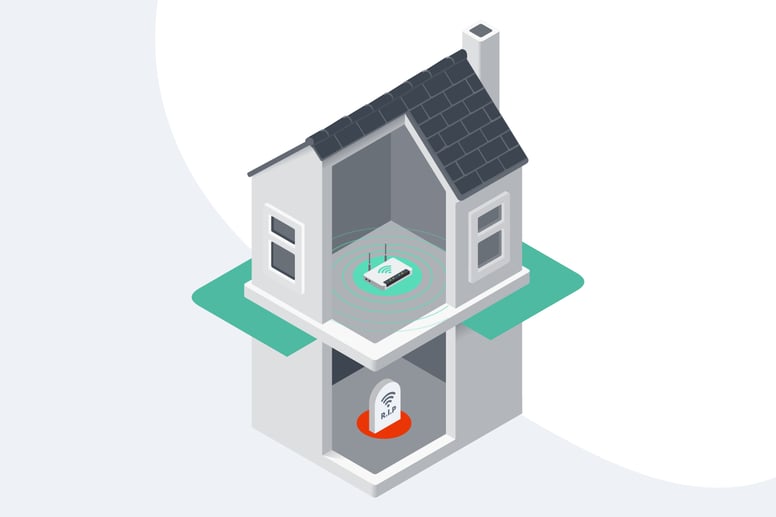Why WiFi dead spots are a problem for support teams

With the majority of consumers relying heavily on home networks for everything from work and school to entertainment, WiFi connectivity is more important than ever. What’s more, these consumers have high expectations. They expect constant connection, and they expect to be able to use any and all of their WiFi-connected devices anywhere in their homes.
But sometimes, that level of connectivity is easier said than done.
The pervasive problem of WiFi dead spots
Those dreaded areas of weak connection cause problems for consumers and support crews alike. Consumers struggle to visualize why they might have dead spots in their home network. They often don’t even know dead spots are a possibility.
And it makes sense. Dead spots haven’t been a problem historically because most of the internet-connected devices in a home would have been in a central area close to the router.
But despite the fact that it makes sense, it’s still an incorrect assumption. Networks need to expand to the whole house, and people likely won’t understand that this will cause dead spots to happen. Instead, they’ll assume the dead spot is an issue with their internet service.
That then becomes a call to the support team for something that they’re not really equipped to fix. Agents don’t have the tools to identify places in the home that the router might not reach. They don’t know the layout, the device placement, the relativity of each room to the router, or even the building materials that might be in the way.
This makes it difficult for the agent to solve the issue over the phone, resulting in a truck roll—sometimes not until days or weeks later. It’s the quintessential poor customer experience, and can morph into a bigger business problem, too.
The cost of a poor customer experience
Studies show that after one poor experience, 50% of customers would switch to a new company. But the tricky thing with WiFi dead spots is that the issue won’t just come up once. The first agent won’t be able to fix the issue, and there’s a good chance the customer will call back, hoping to get a different agent who can fix the problem.
The second agent also won’t have the tools to fix the problem, so the customer will have another poor experience. And after two bad experiences? Up to 80% of consumers would switch to a competitor.
The problem isn’t going away. So what’s the solution?
Technology needs to be able to step in and help.
As homes become increasingly more high-tech, so too must the tools that support teams use to keep those homes online. And the most important thing these tools can provide is visibility.
There’s so much about a customer’s home that remains invisible to support teams simply because they’re not on-site. They can’t solve what they can’t see, so they roll a truck—often to discover that the customer just needs a network extender or pod to cover a WiFi dead spot.
Support teams need the ability to see into that network remotely; to look around, explore, and identify any weak spots. And then, they need the ability to show the customer what they’re seeing—so the customer understands what’s happening, and can see the solution for themselves.
Technology needs to be there to give support teams that visibility and so much more. And soon, it will.
